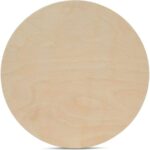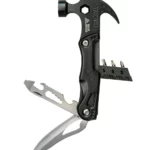I. The Importance of Re-Manufacturing Vintage Garments
II. Techniques and Creative Processes in Re-Manufacturing
III. Sustainability and the Future of Vintage Fashion
The Importance of Re-Manufacturing Vintage Garments
Have you ever stumbled upon a vintage piece of clothing and felt that rush of excitement? There’s something undeniably special about wearing a garment that has a history, a story to tell. But beyond the thrill of finding that unique treasure, re-manufacturing vintage garments holds significant importance in today’s fashion landscape.
First and foremost, re-manufacturing vintage garments helps us to tackle the issue of fast fashion. Fast fashion brands churn out new styles at dizzying speeds, often leading to a culture of disposability. When we choose to re-manufacture vintage pieces, we are actively participating in a sustainable cycle of fashion that values quality over quantity. By breathing new life into these garments, we are not only reducing waste but also promoting a more conscious approach to our wardrobe choices.
But why is this so crucial? Here are a few compelling reasons:
- Environmental Impact: The fashion industry is notorious for its environmental footprint. By opting to re-manufacture vintage garments, we can help minimize the demand for new materials, thus conserving resources and reducing pollution.
- Preservation of Craftsmanship: Vintage garments often showcase incredible craftsmanship that’s hard to come by in today’s mass-produced clothing. By re-manufacturing these pieces, we preserve the artistry and skilled work that went into their creation.
- Unique Style: In a world where everyone seems to be wearing the same trends, vintage garments offer a chance to stand out. Each piece is unique, allowing individuals to express their personal style in a way that new, mass-produced items simply can’t.
- Supporting Local Economies: Re-manufacturing often takes place in small workshops or local businesses. By supporting these endeavors, we also boost our local economies and provide jobs to artisans who are passionate about their craft.
Moreover, re-manufacturing vintage garments fosters a deeper appreciation for fashion history. When we wear a piece that has survived decades, we’re not just donning fabric; we’re connecting with a past era, understanding the trends and values of that time. It can spark conversations, enhance our knowledge, and allow us to share stories of fashion evolution with others.
It’s also essential to recognize the social implications of re-manufacturing. By choosing vintage, we challenge societal norms around beauty and body image. Vintage clothing often embraces a variety of shapes and styles that may not conform to contemporary standards. This can empower individuals to embrace their uniqueness, promoting body positivity and self-acceptance.
In the grand scheme of things, re-manufacturing vintage garments is more than just a fashion choice; it’s a conscious lifestyle decision that reflects our values and priorities. We have the opportunity to make a positive impact on the environment, support local artisans, and cherish the rich narratives woven into each piece.
So, the next time you come across a vintage gem, think of the broader implications of that purchase. Embrace the stories, the sustainability, and the style that comes with re-manufacturing vintage garments. You just might find that you’re not only revamping your wardrobe but also becoming a part of a much larger movement towards a more sustainable and thoughtful fashion future!
Techniques and Creative Processes in Re-Manufacturing
Re-manufacturing vintage garments is like breathing new life into cherished fashion pieces, and it’s a captivating process that combines creativity with craftsmanship. Let’s dive into some of the techniques and creative processes that make this transformation possible!
1. Assessing the Garment
Before any creative magic can happen, it’s essential to assess the vintage piece. This involves examining the fabric, stitching, and overall structure. Here are some tips:
- Check for Damage: Look for tears, stains, or worn-out areas. This will help you decide what repairs are necessary.
- Evaluate Fabric Quality: Vintage fabrics can be delicate. Understanding the material will guide your choice of techniques.
- Consider the Style: Is the garment timeless, or does it have a specific era vibe? Recognizing its style can inspire your re-manufacturing vision.
2. Repair and Restoration Techniques
Once you’ve assessed the garment, it’s time to roll up your sleeves and get to work! Here are some popular repair and restoration techniques:
- Stitching and Patching: For small tears, a simple stitch can do wonders. If the damage is more significant, consider patching with a complementary fabric for a unique touch.
- Reinforcement: Areas like elbows or knees may need reinforcement. Adding a contrasting fabric can not only repair but also create an eye-catching detail.
- Cleaning: Delicate fabrics benefit from careful cleaning. Handwashing and air drying can preserve the garment’s integrity.
3. Redesigning for a Modern Twist
Once the garment is repaired, it’s time to unleash your creativity! Redesigning can involve:
- Changing the Silhouette: Altering the shape can give a vintage dress a more modern fit. Think about adjusting hemlines or taking in seams.
- Mixing and Matching: Combine elements from different garments. A vintage blouse can be paired with a contemporary skirt for a fresh look.
- Adding New Elements: Incorporate zippers, buttons, or embellishments to give the piece a lively upgrade.
4. Upcycling: The Ultimate Recycling
Upcycling is a fun way to ensure that even the smallest pieces of fabric don’t go to waste. Here are some creative ideas:
- Scrap Fabric Projects: Use leftover fabric to create accessories like headbands, bags, or even patchwork quilts.
- Fabric Jewelry: Transform scraps into wearable art. Think fabric-covered earrings or necklaces.
- Home Décor: Vintage fabric can add a charming touch to cushions, table runners, or wall hangings.
5. Documenting the Process
Lastly, consider documenting your re-manufacturing journey. Not only does this showcase your creativity, but it also inspires others. Share your before-and-after photos on social media or create a blog to detail your techniques and insights.
Re-manufacturing vintage garments is not just about preserving fashion history; it’s about embracing creativity and sustainability. So, grab those vintage finds and let your imagination run wild!
Sustainability and the Future of Vintage Fashion
Hey there, fashion enthusiasts! Let’s chat about something that’s becoming more and more crucial in our daily lives—sustainability in the world of fashion. Vintage fashion isn’t just a trend; it’s a movement that’s here to stay. As we become more conscious of our environmental footprint, the importance of sustainability in our wardrobe choices has never been clearer. So, how does vintage fashion fit into this picture? Let’s dive in!
Why Vintage Fashion is Sustainable
First off, let’s talk about the environmental benefits of choosing vintage. Every year, millions of tons of clothing end up in landfills, which is a staggering number. By opting for vintage garments, we’re essentially giving a second life to pieces that might otherwise be discarded. Here are some reasons why vintage fashion is a sustainable choice:
- Reduced Waste: Re-wearing vintage pieces means less waste in landfills.
- Lower Carbon Footprint: Producing new clothing contributes significantly to carbon emissions. Vintage garments have already been made, which helps in reducing that impact.
- Unique Style: Vintage pieces often feature high-quality materials and craftsmanship that stand the test of time—making them not just eco-friendly but also stylish!
The Role of Upcycling
Upcycling is another trendy way to keep vintage fashion fresh and sustainable. It’s all about taking existing garments and transforming them into something new and fabulous. Think of it as fashion alchemy! Not only does this reduce waste, but it also allows for a creative expression that’s truly one-of-a-kind. Here are some fun ideas on how you can upcycle vintage clothing:
- Turn a long vintage dress into a chic top by cutting and sewing it into a new shape.
- Add unique patches to worn-out denim jackets to give them a fresh flair.
- Transform old scarves into trendy headbands or bags.
The Future of Vintage Fashion
So, what does the future hold for vintage fashion? As more and more people become aware of sustainability, we can expect vintage shops and online platforms to flourish. Here are a few trends we can anticipate:
- Increased Popularity of Thrift Stores: Thrift stores are becoming go-to spots for those seeking unique finds, reducing demand for fast fashion.
- Community Initiatives: Local communities may come together to host vintage fairs and clothing swaps, promoting a culture of shared resources.
- Designers Embracing Vintage: More designers are looking to the past for inspiration, integrating vintage styles into their collections.
In conclusion, sustainability is not just a buzzword; it’s a way of life that we can all embrace through vintage fashion. By wearing and re-manufacturing vintage garments, we’re contributing to a healthier planet while also expressing our unique style. So, the next time you’re on the hunt for a new outfit, consider diving into the world of vintage. Not only will you look fabulous, but you’ll also be making a positive impact!










Comments